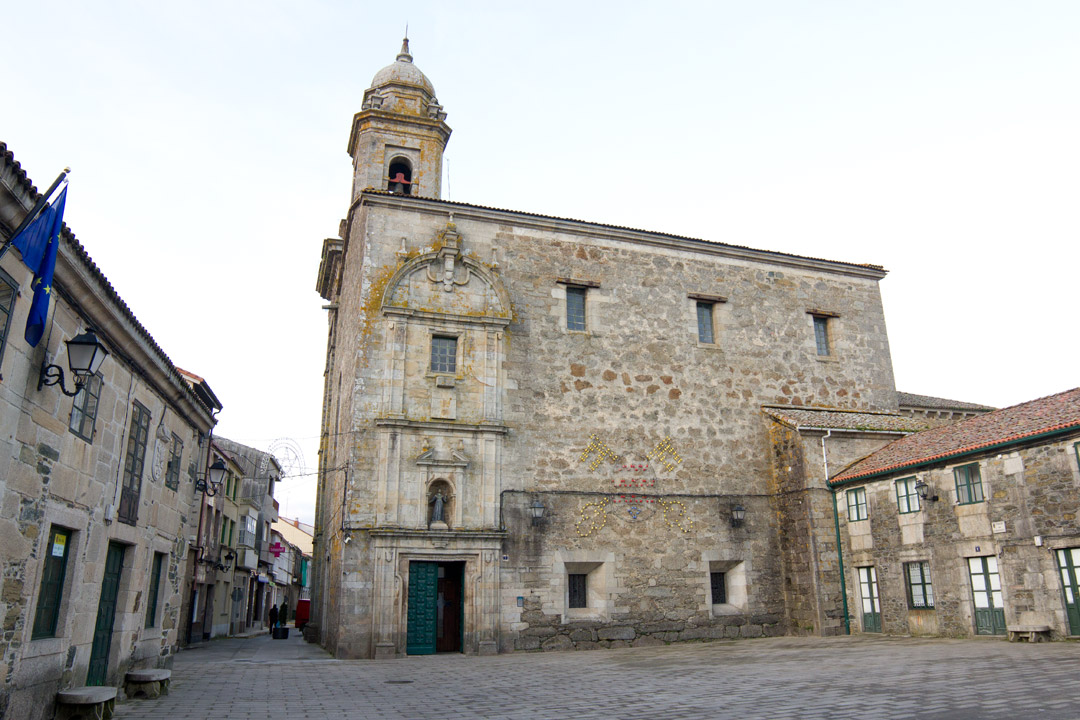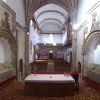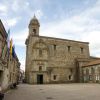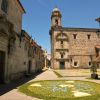Melide, Cerne de Galicia
Sancti Spiritus Church
Sancti Spiritus Church belonged to the disappeared monastery or convent of the Third Order of Saint Francis, which was founded in the 14th century. It is an excellent example of the continuity in space and time. From the ancient church, it only remains a little side chapel, with dome and triumphal lancet arch.

In the 15th century, and more specifically in 1498, Sancho Sánchez de Ulloa, rebuilts the church of the convent in the memory of his mother, Inés de Castro. Masters Xan do Llano and Xan Casal were in charge of the site management. The result was a church with a rectangular apse completed with a crossed-ribbed vault. There are also from this time the two Gothic side sepulchres in memory of Leonor de Mendoza and Inés de Castro.



During the 18th century, the church will be extended with the construction of a barrel nave.
From this time it is also dated the main façade of the church, which is placed in a side, looking towards the square. The tower, also from the 18th century, is similar to the one that we can fin in San Francisco, in Santiago de Compostela.

The magnificent major altarpiece, Baroque in style, was sculpted in 1690 by Francisco de Castro Canseco, one of the most important sculptors in Galician Baroque of the second half of the 17th century and the beginning of the 18th century. Inside, there are also two Neoclassical altarpieces, apart from interesting Baroque and Neoclassical sculptural pieces.


In the central part of the attic a representation of the story of Pentecost in box appears and after the shield of the Franciscan order.
On the floor of the tomb of the medieval altarpiece Fernan Lopes, founder convent do appear. The altarpiece hidden wall paintings of the sixteenth century.
Besides the baroque altarpiece of the main chapel, we have two other interesting Neoclassical altarpieces: the Virgin of Sorrows and dedicated to Jesus of Nazareth.

Other notable sculptures that the church has a Child Jesus are carved in ivory, the seventeenth century, Spanish-Filipino style, which comes from the chapel of the Pious Society of St. Anton, and known as Veronica Melide, also from of the same chapel, attributed to Francisco de Castro Canseco.

Other medieval tombs were also well preserved Gothic of the chancel. These highlight the Alfonso Váquez Insua, the XV century, located in the old chapel of Santa Catarina, where today's altarpiece is Jesus of Nazareth.










































